This article has also been cross-posted at Greater Auckland and you can comment there.
Density is a slippery subject. Many an interesting but false factoid is thrown around about Auckland, such as that it is “the size of London”1 or “more spread out than any city except Los Angeles”2.
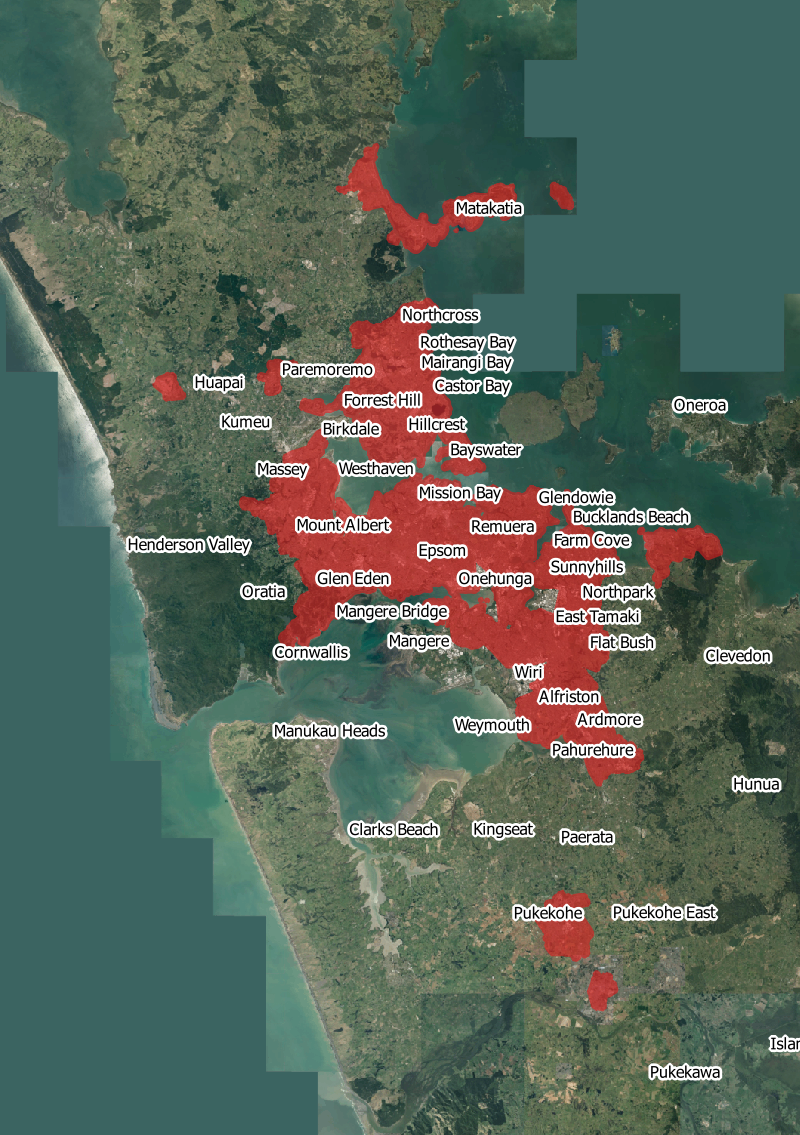
The extent of “Auckland” for the purposes of this post: it has a density of about 2,200 people per square kilometre
This is the second part in a series. A few months ago (sorry it’s taken so long), I talked about how density is defined, and looked at an alternate history, where Auckland had spread out even further than it has in reality. Now let’s look at the other direction: a more compact form, like you’d find in Europe, or, as the title suggests, Asia.
2,900
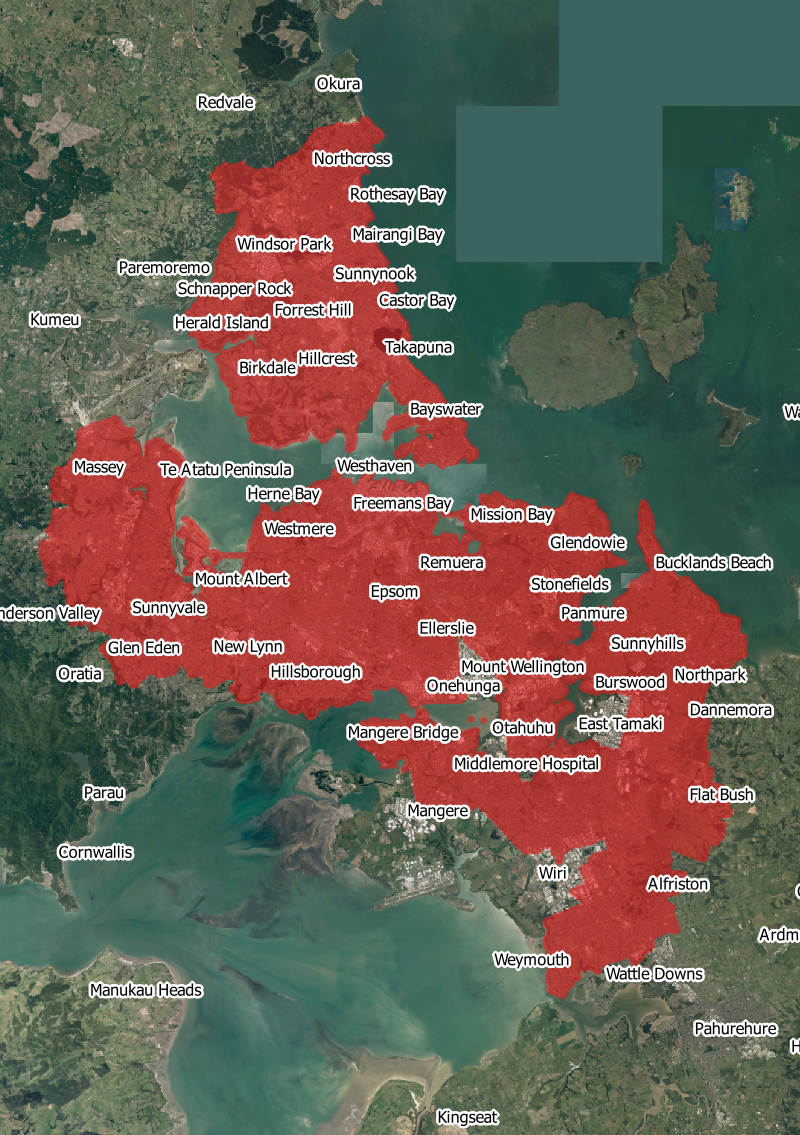
Our first step up in density is to Sydney, at 2,900 ppl/sq km the only city in Australia or New Zealand that is even denser than Auckland is in real life. It’s slightly denser than Los Angeles (2,700 ppl/sq km) and a little less than the urban area of Amsterdam (3,200 ppl/sq km).
Sydney is pretty similar to Auckland in most of its form: a few main centres with high-rise towers, and a large suburban area of detached houses. The major difference you would notice is that, especially in the innermost suburbs, you are more likely to find two-storey terraced houses.
If Auckland had followed suit, the main effect is that the commuter exurbs are no longer necessary. While they might still exist as small rural towns, Pukekohe, Papakura, Orewa, Whangaparaoa, Kumeu and so forth are not large parts of the Auckland commuter belt. The edges of the main urban area have also contracted slightly.
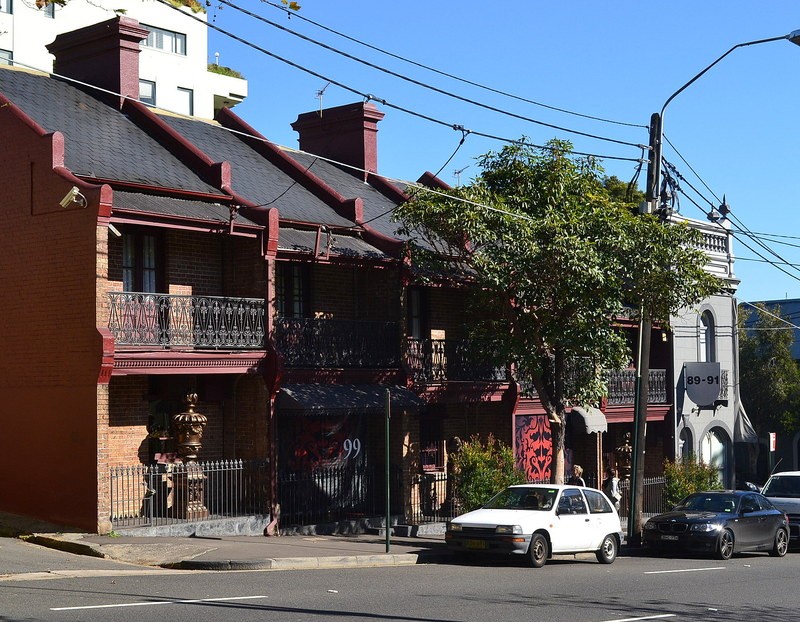
Terraced houses in Sydney. Image: Wikipedia User Sardaka
3,800
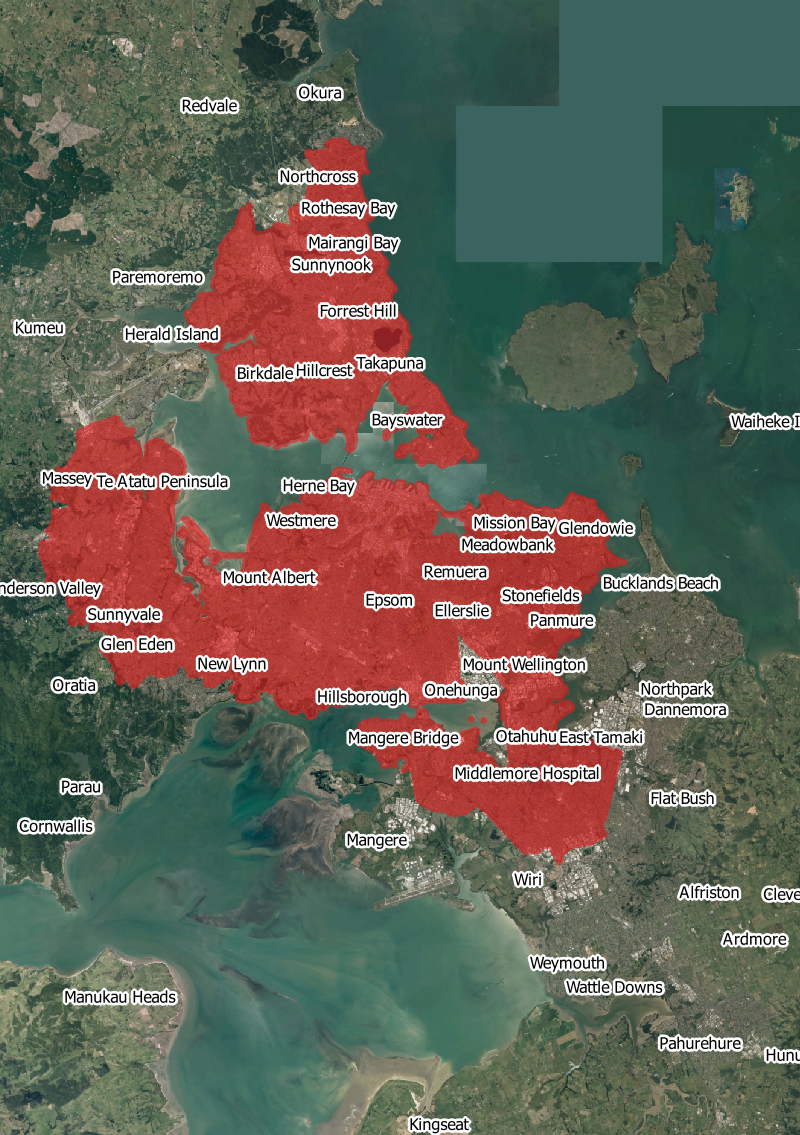
Next stop: Paris. 3,800 people per square kilometre. The tourist-laden central city is only a fairly modest part of overall Paris, but the suburbs are still somewhat suburban. It’s also a fairly desirable place to live and travel to, so being a little less than twice as dense as Auckland and having not quite as much natural scenery doesn’t seem to have hurt it that much.
Paris is also interesting, in that the core has very good public transport, but much of the suburbs are highly dependent on cars, or in poorer areas, there is simply little opportunity to be mobile at all, and as a result, high unemployment.
Paris is currently in the process of expanding its rail network to more of the outer suburbs.
If Auckland were the same average density, there’d be nothing east of the Tamaki River or south of Manukau, and we contract a little bit in the farther suburbs of the North Shore and former Waitakere City.
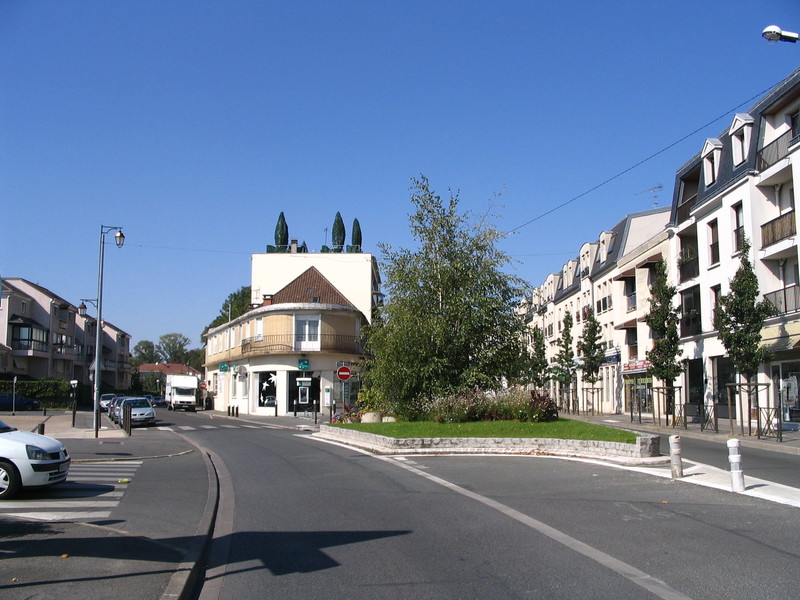
Gournay-sur-Marne, in the outer suburbs of Greater Paris. Its density is about the same as the average for the greater Paris region as a whole. Image: Wikipedia user Benjism89
5,200
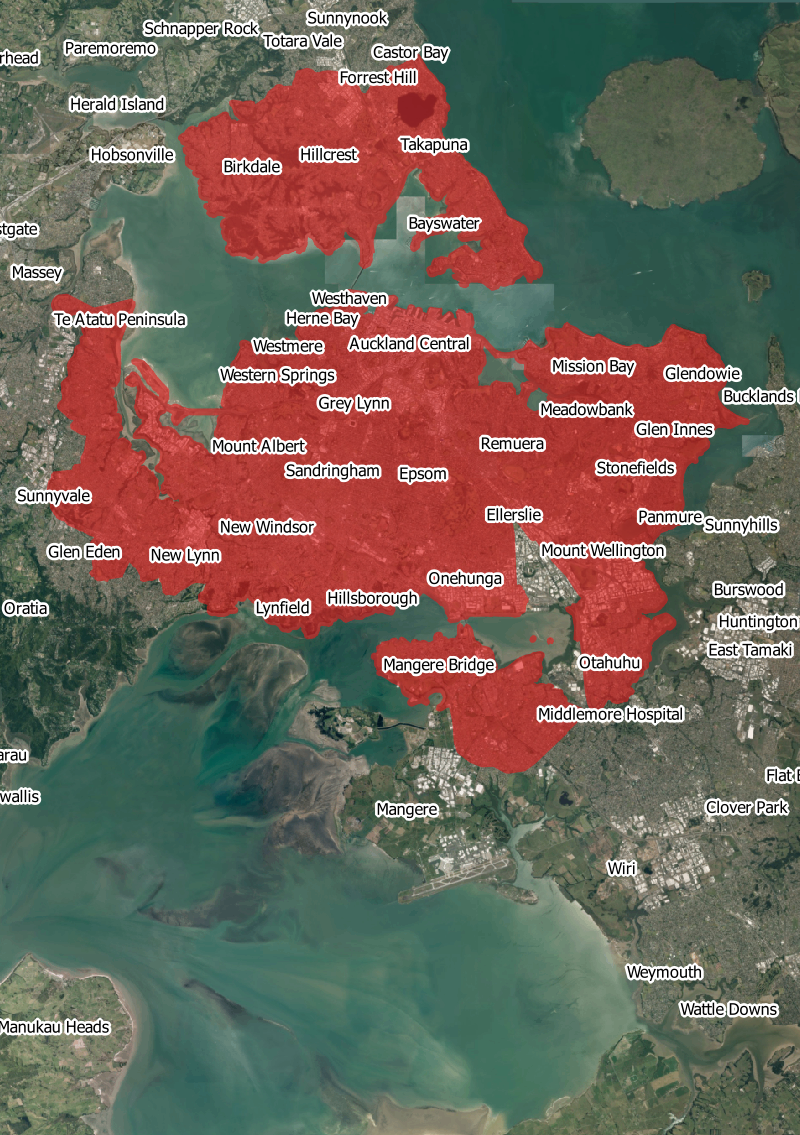
This is about halfway between the city proper of Amsterdam (4,900 ppl/sq km) and Greater London (5,500 ppl/sq km). The latter includes most of London’s “suburbs” and a little green belt, but doesn’t include some parts of the Home Counties that are still dormitory communities for London commuters.
London is the European city New Zealanders are most likely to be familiar with. It’s similar to Paris, with a tourist-clogged central area but with relatively unknown suburbs providing most of the places people actually live. The suburbs are dominated by terraced or semi-detached houses on fairly small lots: apartments are still fairly rare.
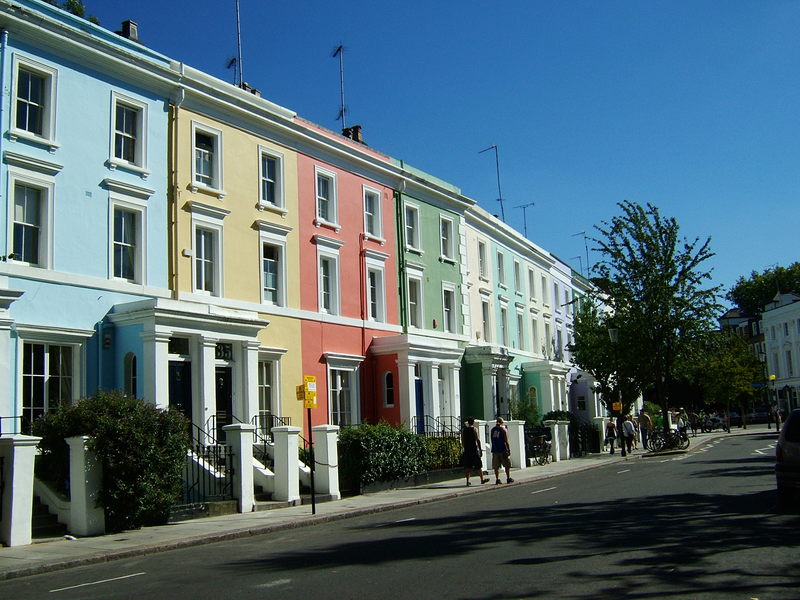
Notting Hill, London. Image: Flickr user S Pakhrin
Central Amsterdam is also dominated by terraced houses or small apartments: generally a four or five stories, taller than most of suburban London at two or three. However, with larger lots, larger private courtyards, and its famous canals, the density is actually lower than Greater London.
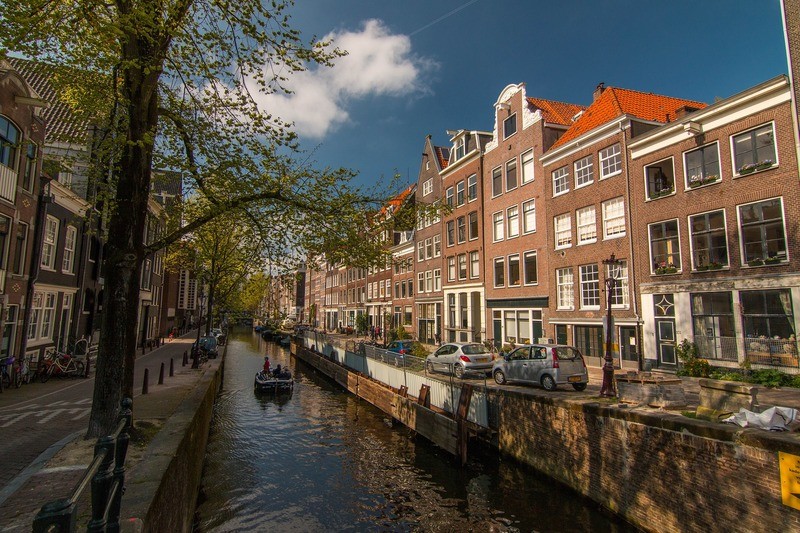
Amsterdam. Image: Pixabay user neshom
7,700
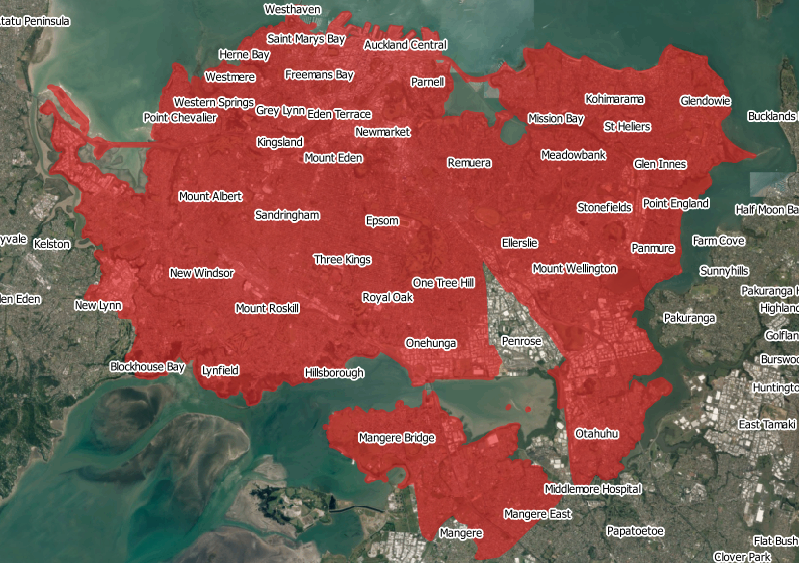
Okay, let’s stop messing around with namby-pamby European cities and get somewhere serious. Singapore (7,700 ppl/sq km) is fairly uniformly dense, a city that takes up almost all of the land inside the country’s tiny borders. It’s technically denser than the entire Special Administrative Area of Hong Kong (6,500 ppl/sq km), but that latter figure is entirely misleading. Most of the area of Hong Kong is in the New Territories, and not urbanised. The actual Hong Kong is far denser, as we’ll see later.
Compared to the European and even Australasian cities we’ve looked at, Singapore is fairly new, and very heavily centrally planned. Most of the built form dates from after World War Two, and more than 80% of Singaporeans live in housing schemes built by the government’s Housing and Development Board. As a result, the city is dominated by large apartment buildings, on the “tower in a park” model popular in the mid 20th century. The city has a generous network of wide roads, and efficient subways, but provision for walking varies considerably.
Singapore is probably close to the mental model many people have of a dense city: lots of high-rise buildings, not much private space. However, because high rise buildings are also generally spaced farther apart, the density is often similar or less than cities with closely-packed but shorter buildings.
Singapore is probably the densest large complete metro area in the world, thanks to being so very contained within its national borders. From here on, we’ll only be looking at parts of cities.
An Auckland at Singapore densities is only slightly larger than the old Auckland City Council area, the main part of the isthmus.
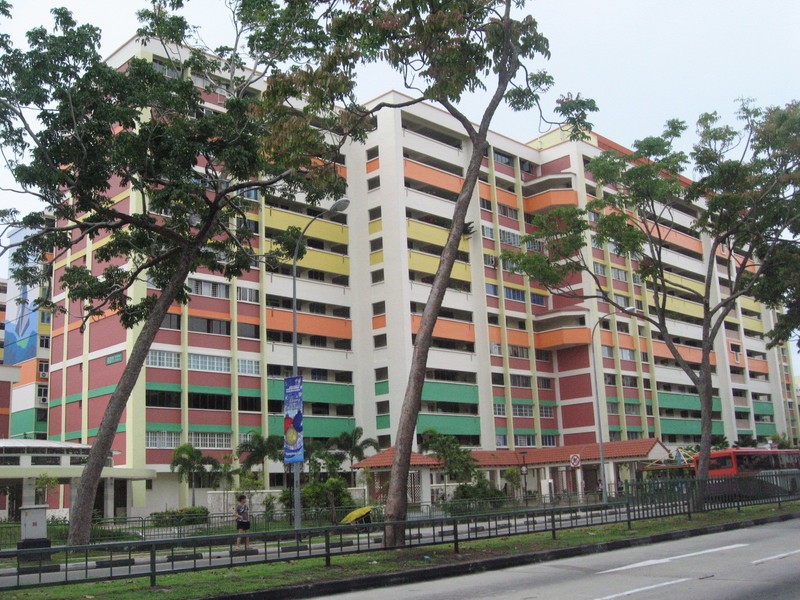
Singapore. Image: Wikipedia user Terence Ong
11,000
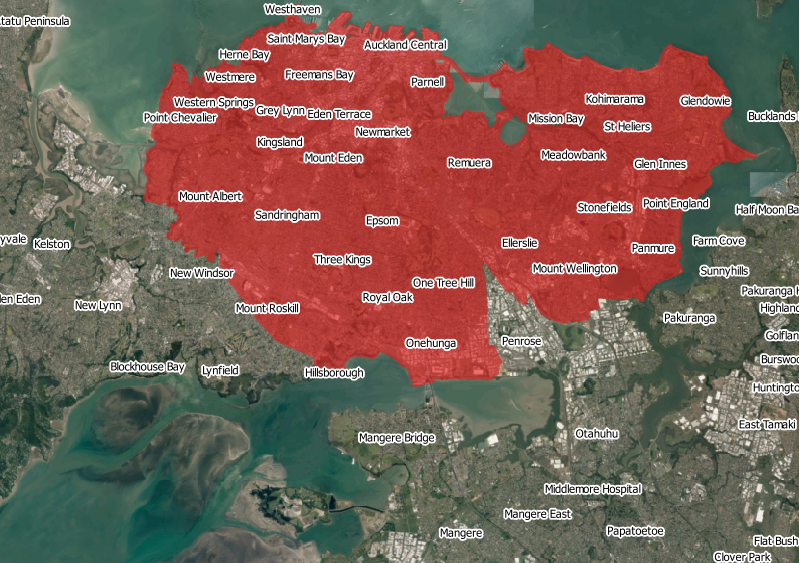
Our next stop is somewhat surprising: real life Auckland. Or rather, the census area unit that makes up the half of the city centre west of Queen Street. The varyingly dire apartment blocks of Hobson Street. Sky City. A lot of it isn’t residential at all: some of our biggest office buildings are here, and a large area of low-rise retail around Cook Street and Victoria Park. (This doesn’t include the waterfront itself).
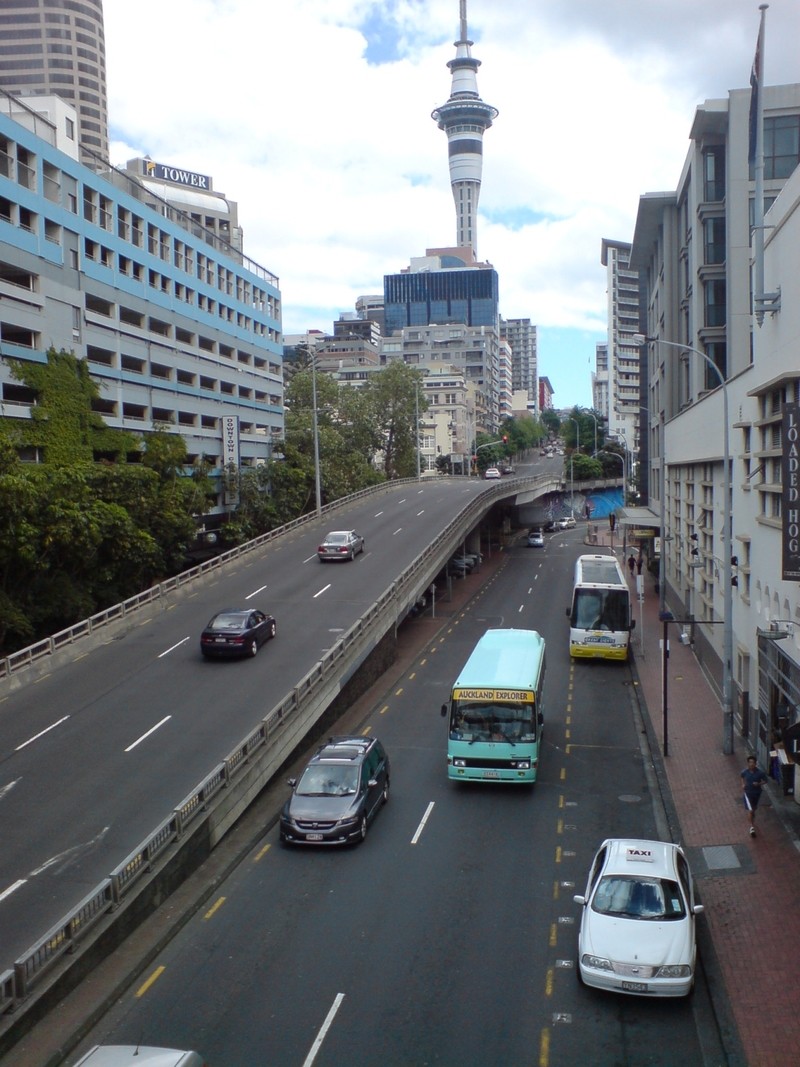
Auckland’s Hobson Street. Image: Wikipedia user Ingolfson
It’s also pretty well exactly the same residential density - 11,000 ppl/sq km - as the City of Westminster, the heart of inner London3. This shows pretty well that density figures alone do not tell you a lot about the feel of a place4. Central London is a very different type of place to particularly the western half of Auckland’s CBD, while also being full of major tourist attractions, some large parks, and significant employment.
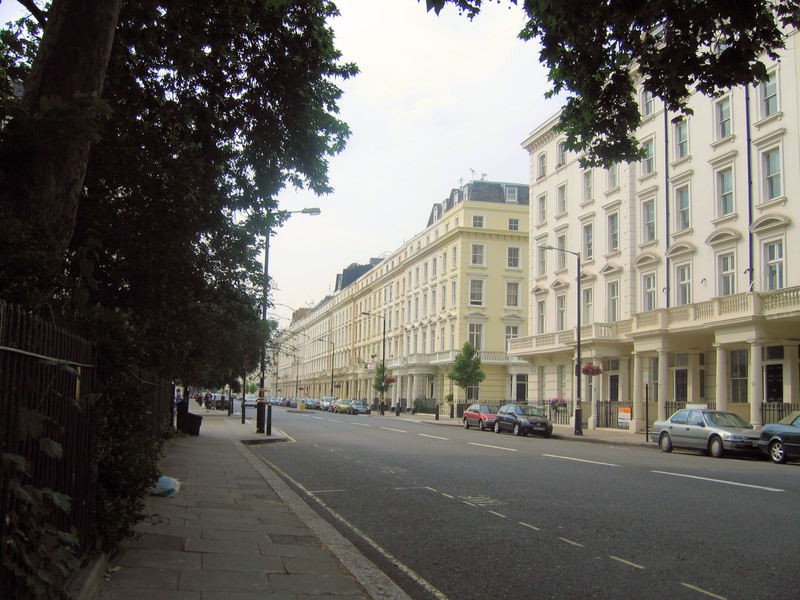
Affluent area in Westminster, London. Image: Wikipedia user Don Joseph
15,000
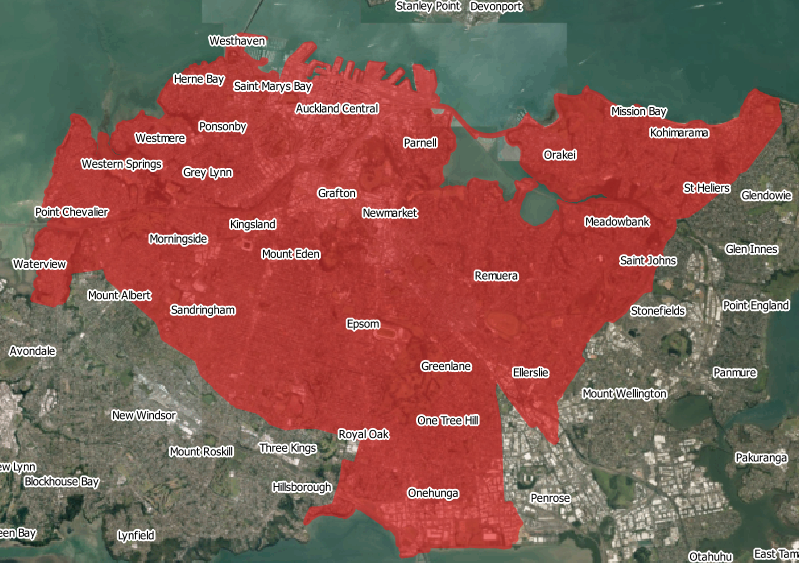
15,000 people per square kilometre would give us the New York borough of Brooklyn, or the 23 Special Wards of Tokyo. It’s a little less dense than Hong Kong Island at 16,000 ppl/sq km, or the city proper of Paris at 21,000 ppl/sq km.
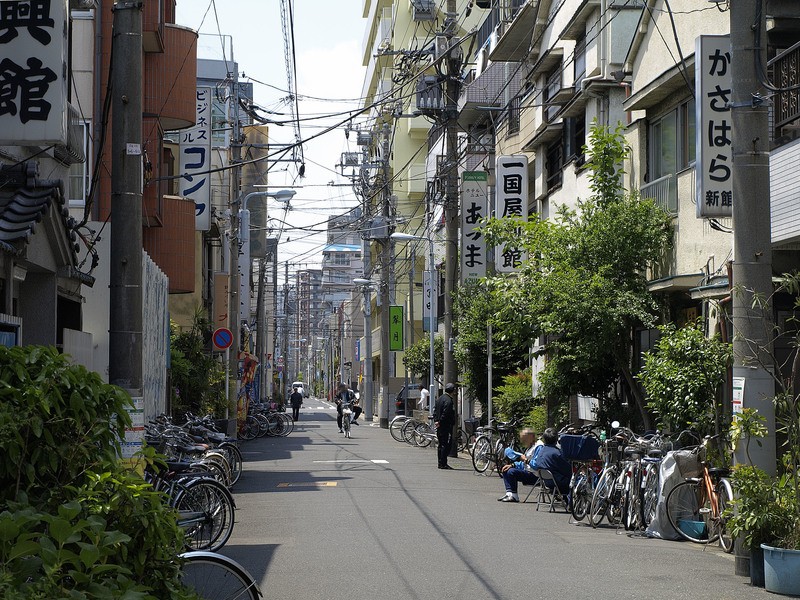
Street in Taito ward, Tokyo. Image: Wikipedia user Kounosu
Once an area is at about this density, cars start to become impractical, no matter how much effort it put into making driving easy. Most world areas at this density have well-developed public transport systems, or are small enough to simply walk across.
An Auckland with our modern-day population at this density would cover, coincidentally, about the area that was served by Auckland’s tram network at its height.
27,000
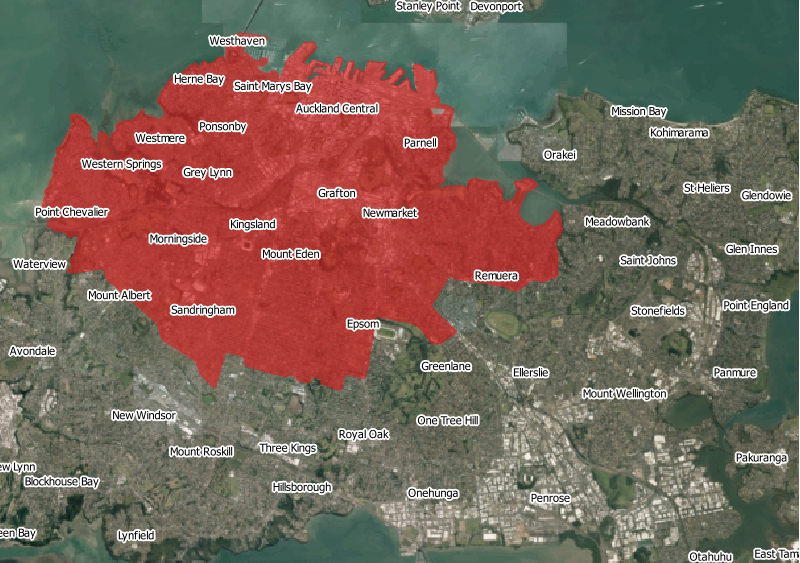
27,000 people per square kilometre: the density of the New York borough of Manhattan, one of the most famously dense places in the world. Almost the entire island’s residential space is in apartment buildings, often around six to eight stories, but with several large areas dominated by high-rises. It’s a good illustration that height isn’t everything when it comes to density.
A Manhattan Auckland would be a place you could walk across in about an hour: it’s also approximately the size the city was in 1915. For reference, real-life Auckland in 1915 had a population of about 130,000: giving a density of around 3,000 people per square kilometre.
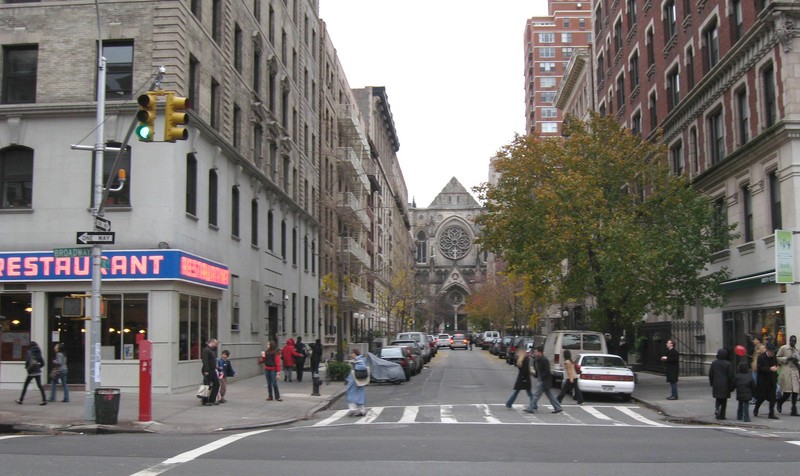
Manhattan. Image: Wikipedia user Jim Henderson
Hong Kong and beyond
Phew! That’s quite a range. But we’re not quite done. There are parts of cities denser than Manhattan. The densest part of modern-day Hong Kong is Kwun Tong (51,000 ppl/sq km). The densest I could find anywhere in the world is Lalbagh Thana, in Dhaka (168,000 ppl/sq km). An Auckland at that density would cover roughly the CBD and Ponsonby.
In general, cities are only this dense with very crowded living areas: lots of people living in small apartments, or informal settlements with little outdoor or public space.
But the densest city that there’s ever been, as far as we know, was the Kowloon Walled City, in what was then British-controlled Hong Kong. The Walled City grew rapidly from 1945: due to a complex legal history, neither China nor Britain could technically exercise control over a relatively small, 2.6-hectare area, a former fort. It became a popular destination for refugees and other migrants from China, not allowed into Hong Kong proper.
It was lawless - controlled by the triads, with almost no police presence or government regulation. Most residents didn’t engage in crime or drug trafficking, but all sorts of businesses that would prefer less regulation flourished. Unlicenced dentists and doctors, particularly liked the city, as there was no threat of prosecution if anything went wrong.
So there was no-one and almost nothing to stop the city being developed to near the limits of physical possibility: tall buildings jammed directly next to each other. The only limit was the flight path of Kai Tak airport: buildings generally topped out at 13 to 14 stories. At its peak in 1990, there were 50,000 residents, which equates to 1,923,000 per square kilometre, nearly a thousand times denser than present-day Auckland.
After China and Britain had agreed on terms to return Hong Kong to China, and settled their dispute over the governance of the area, the Walled City was cleared in 1993.
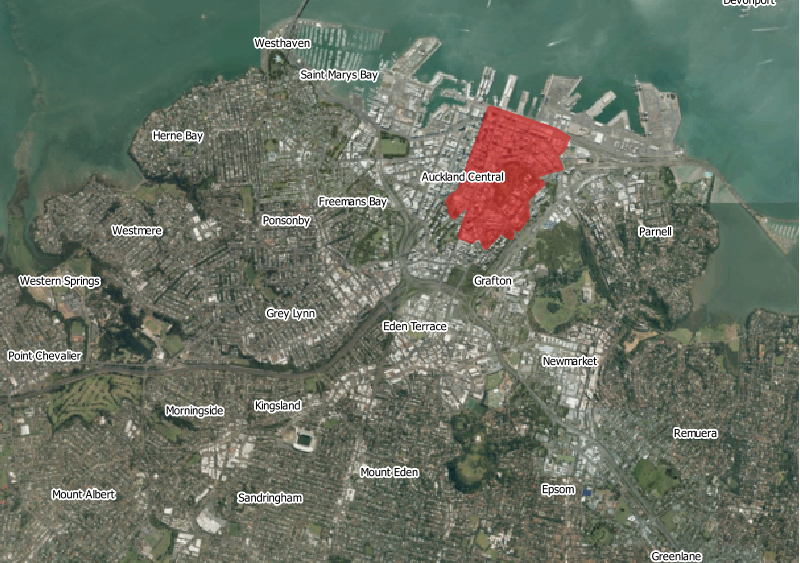
If Auckland were that dense, it would house all 1.3 million Aucklanders (circa 2013) in an area about one-third the size of the current CBD. Most of them wouldn’t see the sun much.
Photographs still survive of the Walled City, but it’s difficult to get a sense of it from inside. There simply isn’t enough room to see very far. Buildings are also so close together that streets don’t really exist: they are more corridors, with no access to daylight.
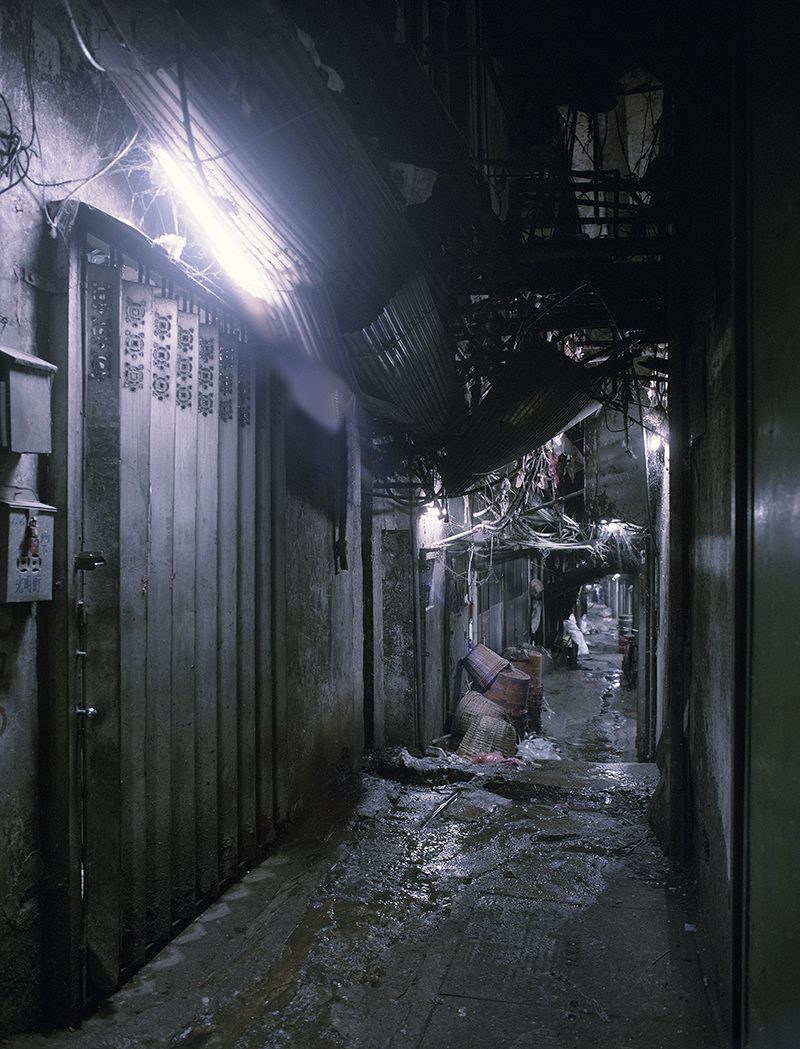
An alley in the City of Darkness. Image: Ian Lambot
You can only really visualise the sheer compaction of people and buildings from outside. In this photo, the city’s boundaries are precisely at the building frontage you see. The buildings continue, packed that close together, the entire depth of the city.
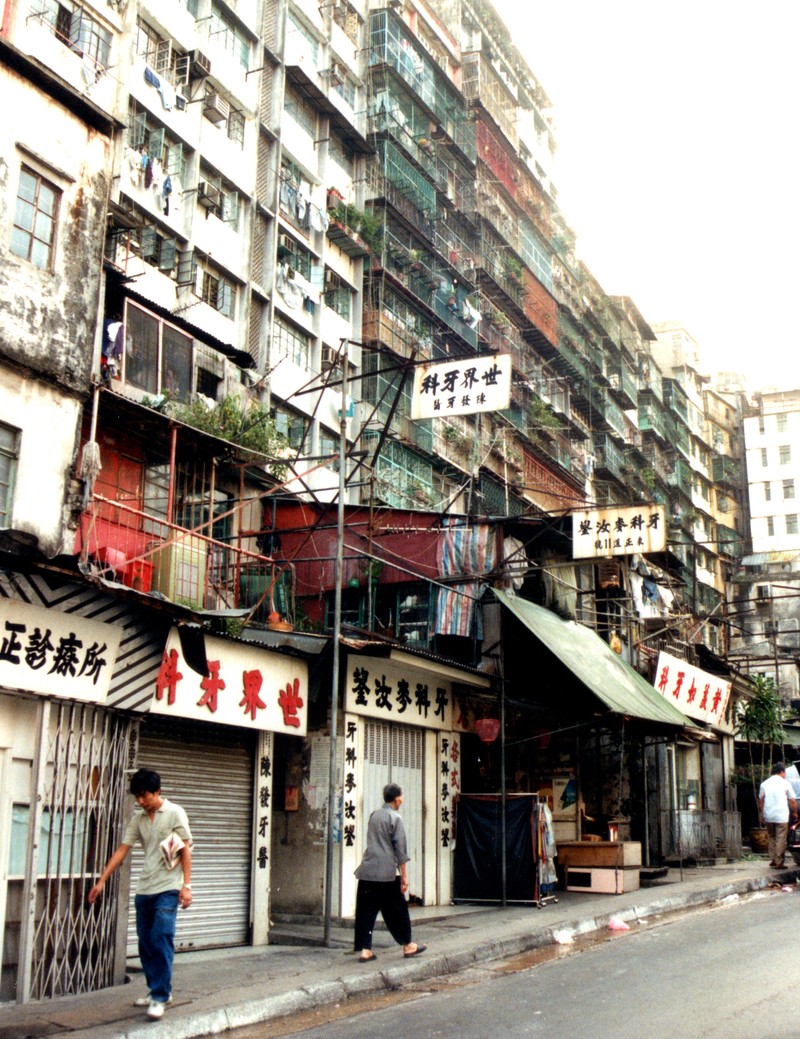
Kowloon Walled City, from outside. Image: Roger Price
It’s a horrifying but fascinating place: you can read more about the Walled City, and see more photos in these articles:
- My New Life in Asia - The City of Darkness
- CityLab - Rare Maps Show Life in Hong Kong’s Vice-Filled ‘Walled City’
- Curbed - Mapping the Horrors of Hong Kong’s ‘Lawless’ Walled City
- Elsewhere Journal - Extract from ‘Fallen Glory’ by James Crawford
- Greg Girard
What could it all mean?
After all that, I think the most important thing to note is that despite the maps and “representative” photos we’ve seen, cities are not actually a uniform density. Most cities have a range of neighbourhoods of different densities.
For residents looking for somewhere to live, this is generally a good thing: those who want to be close to goods and services and jobs and other dense central city perks, and are willing to have a little less space or closer neighbours can do so. On the other hand, there are also options for people who want to have more elbow room at the expense of having longer trips to places of interest.
There are a few cities that expect everyone to live in a similar way, particularly cities in the English-speaking New World that often only offer a certain type of suburban lifestyle. Other cities like Singapore have such extreme space constraints that most people can’t afford anything but a small apartment. But one size never truly fits all.
-
About a third the size of London, in reality. ↩
-
Auckland is actually less dense than Los Angeles, but Los Angeles, surprisingly, is the densest major metropolitan area in the United States. Think of New York and you think of Manhattan, but the overall metropolitan area of New York is far more dominated by detached houses on large sections in places like Long Island and Westchester County. Los Angeles, on the other hand, has apartments and detached houses on small lots for mile after mile, until stopping dead at the mountains. ↩
-
The traditional centre of London is Charing Cross, in Westminster, where road sign distances to London are measured from. This, along with most of the other major central city features, are in Westminster, rather than the geographically small City of London itself. ↩
